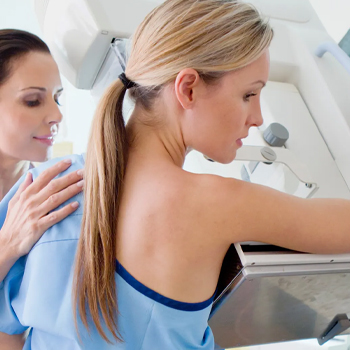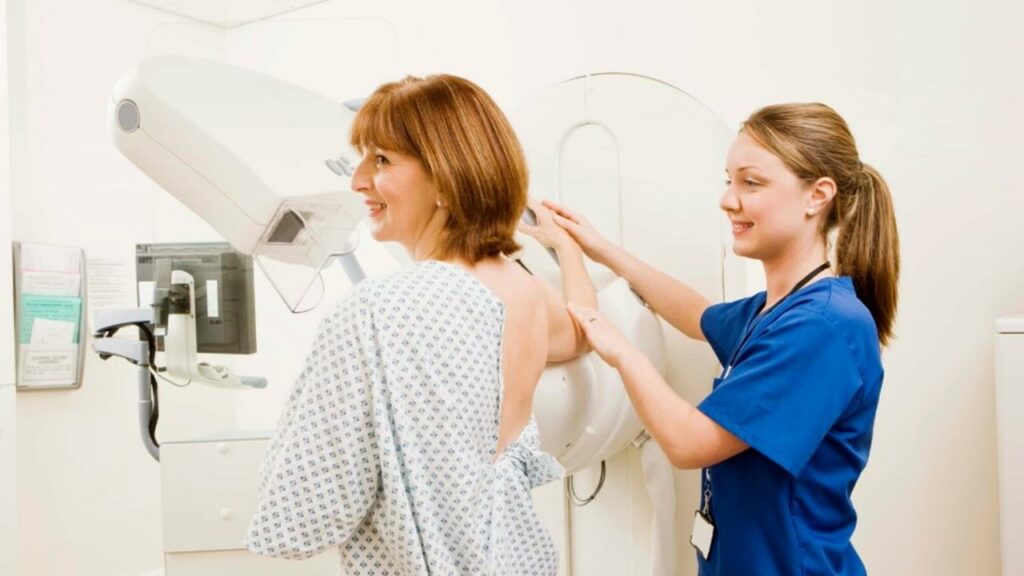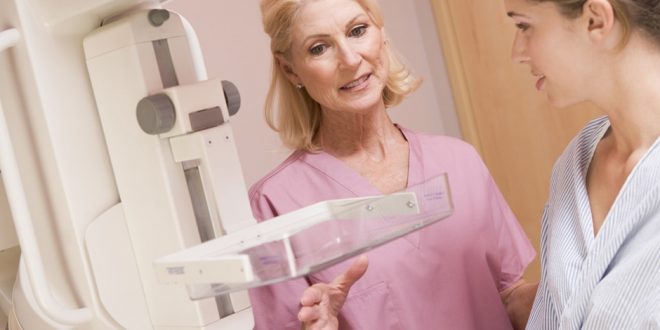As with any other career in the medical field, securing specialized education is important for those aspiring to become a mammographer.
Here’s everything you need to know about mammography schools and why RadComm is one of the top choices for a career in mammography.
Getting a Mammography Education
Mammography technologists, or mammographers, have an extremely important role in the hospital workforce.
They work hand in hand with doctors and physicians to perform x-rays of breast tissue in both women and men to be able to detect cancer and other diseases early, at a time when it’s most treatable.

Getting an education in mammography is not as complicated as it sounds. Unlike most other courses in the medical field, you don’t have to spend a minimum of eight years to secure a certificate in mammography. Most mammography schools are also relatively inexpensive, but pursuing a career in this line of work promises job stability, good benefits, and fair pay.
Mammographers will also be frequently exposed to plenty of different people, so it’s a must that they can relate to and converse with people of all ages and social groups. Often people’s visits to the radiology clinic are filled with anxiety, and they will more than likely have plenty of questions. Schools will do their best to teach how to handle the situation best and arm potential mammographers with the right answers.
Mammography Program Training & Requirements

Associate’s Degree in Radiologic Technology
Securing a degree in radiologic technology is the first requirement to becoming a mammographer. This can either be in the form of a 2-year associate’s degree or a 4-year bachelor’s degree in an accredited radiologic technology program.
A course in radiologic technology is a combination of coursework, classes (either online or in-person), hands-on laboratory work, and clinical practicum. These will teach you the fundamentals of mammography, how to handle radiology equipment, and crucial safety measures when it comes to radiation. Not only are mammographers responsible for the safety of their patients, but they are also responsible for other staff in the radiology clinic.
The fundamental education is to help prepare students for the American Registry of Radiologic Technology (ARRT) national certification examination.
One-year certificate programs in mammography are offered to those who are already working as radiologic technologists.
ARRT Examinations
A certification in ARRT [1] is required by law in most states to become employed as a mammographer. As stated above, to become a candidate and participate in the exam, you must first secure an associate’s or bachelor’s degree. You may then apply for the examination by filling out the ARRT form, and upon submission, the organization will confirm that you’ve completed an accredited program.

Once your application has been approved, they’ll then send you a status report containing your exam schedule and other details. The passing score for the exam is 75. You will be receiving the exam results after two to three weeks.
State Examinations
Some states don’t require an ARRT certification or licensing to become a worker in the field, which doesn’t make much sense to us. If you’re handling dangerous radiation — a proven health hazard — it is a must to secure licensing. Today, six states don’t require certification (Alabama, Alaska, Idaho, Missouri, North Carolina, and South Dakota).
Other states, however, will require a state-issued mammography license aside from the ARRT certification. These have different requirements than the ARRT and will vary across different states.
Advanced Mammography Certificate Program
As soon as you receive the ARRT certification, you will have to pursue further education — this time, specializing in the field of mammography. This will give you hands-on experience in mammography-specific technology, such as 3D mammography and DBT (digital breast tomosynthesis). You will be taught how to perform diagnostic procedures, adjust the mammography equipment to produce the best quality, and troubleshoot said machinery. This is a total of 40 clinical hours in education specific to mammography, under the supervision of a qualified instructor.
Apart from the 40 hours of courses and classes, you will need to perform a minimum of 25 mammography examinations with the guidance of a licensed mammography technologist. Both classwork and hands-on practicum have to be accomplished within two years. These fulfill the requirements of the FDA’s Mammography Quality Standards Act (MQSA).
You will then be eligible to apply for an ARRT certification in mammography. Applicants must already possess an ARRT certification in a different field (such as radiologic technology), meet educational requirements, and have completed the 25 mammography examinations. Simply passing the ARRT exam in mammography is the final step.
Campus vs. Online Education

Quality Training
RadComm believes in working with only the best mentors. Our certified mammography educators are determined to bring out the best in you by providing you with high-quality tomosynthesis mammography training and education that meets the standards and requirements of both MQSA and ARRT.
RadComm has also partnered with over 500 hospitals and radiology clinics in over 27 states, so you don’t have to be worried about finding a clinic for your practicum. We can find you a convenient clinic so you can complete the necessary hands-on activities, like patient positioning, implant positioning, physics, pathology, quality assurance, and many more.
Flexibility
One of the biggest reasons radiologic technologists fail to pursue continuous education in mammography is the lack of time. Perhaps you’re a busy professional who’s working two, three jobs, or you have a family with little kids that need to be attended to.
With RadComm’s online courses and modules, you don’t have to worry about conflicting schedules or having to sit in class.

No need to worry about expired courses as well; everything can be reviewed at your convenience.? We strongly advocate learning at your own pace, so we made the videos easily replayable whenever you want to review them.
Affordability
Many people believe that education is a luxury they can’t afford. Some mammography schools cost thousands of dollars, and you’ll have to show up to classes in person. Some mammography seminars require transportation and a hotel stay, which can get ridiculously expensive.
RadComm believes that quality education doesn’t have to come with a hefty price tag, nor does it have to disrupt our schedule. Get in touch with us today to learn about our exciting rates.
FAQS
You have two years to complete a specialized mammography course in order to qualify for the ARRT. You will have to accomplish 40 hours of classes and coursework, plus 25 hands-on mammography examinations with the guidance of a licensed mammography technologist.
A career as a healthcare professional is one of the most stable. Demand for technologists is expected to grow to about 9 percent in the next ten years, one of the fastest on average to most other occupations.
In Summary
Mammographers have helped save lives over the past decades; just like other healthcare workers, they are considered the world’s modern heroes.
Now that you are well-informed on what you need to get that coveted mammography education, there’s no reason to wait any longer on taking that first step. RadComm services are here to help you get started on that journey. Get in touch with us today.

SHOP RADCOMM COURSES
References:
- https://www.arrt.org/


